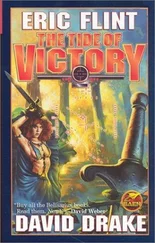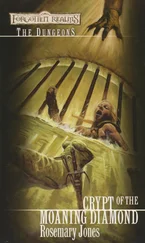The PzKpfw V, or Panther, represented the pinnacle of German tank production, mounting the even more powerful 7.5cm KwK 42 L/70 gun that could penetrate 120mm of armour at 1,094 yards. On the Eastern Front it had proved itself superior to the Soviet T-34, though mechanical teething problems initially rendered it unreliable. The main models deployed in Normandy were the Ausf A and Ausf G. Theoretically each I Abteilung of a panzer regiment was equipped with this tank.
While the PzKpfw VI Tiger I was a formidable weapon with 100mm frontal armour and 8.8cm KwK L/56 gun, only three battalions were deployed in Normandy, with about 126 tanks. The Tiger’s technological excellence meant it took twice as long to build as the Panther; however, its gun could easily deal with every single type of Allied tank. The Tiger could tear a Sherman apart, while the latter could not cope with the Tiger’s frontal armour. The American 75mm gun could only penetrate the Tiger at close range and while the British 17-pounder gun was much more effective it was not available in significant numbers. Even those Shermans armed with a 76mm gun had to close to 300 yards. The Allied response to a Tiger was to overwhelm it or sneak up behind it!
The Tiger II, or King Tiger/Royal Tiger, was brand new in June 1944, but only equipped one company, totalling about a dozen tanks, in Normandy. In many ways its high fuel consumption, limited operational range, fragile steering and slow turret traverse nullified its powerful main armament, the 8.8cm KwK43 L/71 and very thick armour.
Another common armoured fighting vehicle in Normandy was the Sturmgeschütz or StuG III assault gun, armed with the 7.5cm StuK40 L/48, and to a lesser extent the StuG IV equipped with the same weapon, which was used to equip the tank destroyer battalions of the panzer divisions and in some cases substituted for the Panzer IV. They also equipped the independent Sturmgeschiütz Brigades, a number of which were deployed throughout France. Lacking a turret, this assault gun was a very good defensive weapon and ultimately ideally suited for the Normandy countryside.
The Jagdpanzer IV, mounting the same gun as the Panther, was intended as a StuG replacement but was never built in sufficient numbers. It appeared in 1944 and began to replace the Marder self-propelled gun in the panzer divisions’ tank destroyer battalions. Only about sixty were deployed in Normandy. Similarly the Jagdpanther, based on the Panther chassis and armed with the 8.8cm Pak 43, were few in number in Normandy, about a dozen at the most.
The main self-propelled anti-tank weapon was the Marder armed with a 7.5cm Pak 40/3, with limited numbers of the Pak 43-armed Hornisse. The principal self-propelled artillery in Normandy comprised the Hummel self-propelled 15cm howitzer based on the Panzer IV chassis, and the Wespe based on the Panzer II, armed with a 10.5cm gun. The Germans also deployed a range of hybrid self-propelled guns based on French tank and ammunition tractor chassis.
The most common Allied tank to fight in Normandy was the American M4 and M4A1 (with cast hull) Sherman. Mechanically reliable, it was handicapped by thin armour and a gun lacking sufficient punch. Its good cross country speed and higher rate of fire could not make up for these two key short comings. Tank crew survival was paramount as tanks could be replaced relatively easily but not experienced crews; the Sherman, however, had a nasty habit of burning when hit and if this happened the crew only had a fifty per cent chance of survival.
Despite extensive combat experience with the American and British armies in North Africa, Sicily and Italy, by 1944, for a variety of reasons, the Americans had failed to develop a worthy successor to the Sherman, meaning the Allies had to rely on numbers rather than quality. This crucial failure was to be a key factor in the Germans being able to hold on for so long in Normandy.
The Americans developed tank destroyers based on the Sherman that could penetrate at least 80mm of armour at 1,000 yards, notably the M10 Wolverine armed with a 3-inch gun and the M36 armed with a 90mm gun, though these were not available in sufficient quantities. The 3-inch gun was intended to tackle the Tiger, but being only able to penetrate the frontal armour at 50 yards rendered it all but ineffective against this panzer. Similarly, the M18 Hellcat armed with a powerful 76mm was too few in number.
Two thirds of the tanks used by British, Canadian and Polish armoured units in Normandy were Shermans, the rest being mainly British-built Cromwell and Churchill tanks. The Cromwell cruiser tank was numerically and qualitatively the most significant British tank and, along with the Sherman, formed the main strength of the British armoured divisions. However, even armed with a 75mm gun it was inferior to the late model Panzer IVs and the Panther. Although fast, the narrowness of the hull made up-gunning it very difficult. Similarly, the British Churchill infantry tank, though heavily armoured, could not take any gun larger than the 75mm.
The heaviest British weapon, the 17-pounder (76.2mm), could open up 120mm of armour at 500 yards and was either towed or mounted in limited numbers of Shermans designated the Firefly VC. Later it was also mounted in the Valentine chassis, creating the unwieldy Archer self-propelled gun, and in the M10 to create the Achilles; these, though, did not enter service until well after the Normandy campaign. The Sherman Firefly was the only Allied tank capable of taking on the Panther and the Tiger on equal terms, but due to the shortage of guns it was only issued one per troop. The net result of all this was that the Allies’ tanks were in for a severe mauling at the hands of the panzers.
It is vitally important to remember that at the time the Battle for Normandy was far from a foregone conclusion. The Dieppe failure loomed large in everyone’s minds and despite the Allies’ considerable planning and preparation there was a very real fear that D-Day might go the same way. The successful landings in North Africa had been against ill-equipped French forces that were in a state of political disarray, while those on Sicily and the Italian mainland had been against the Italian Army which was largely a spent force. Striking Hitler’s Festung Europa was an entirely different matter, even if the German forces were in some cases second rate, reconstituting or recuperating.
After the Germans had successfully blunted Montgomery’s initial advances, rather than fight a bloody frontal battle for Caen, he decided 2nd Army would launch its main effort to the west, towards Villers-Bocage and Evrecy, then southeast towards Falaise. He committed two veteran divisions, the 51st (Highland) and 7th Armoured (‘Desert Rats’), for two main flank attacks. The 51st were to attack through the 6th Airborne Division, east of Orne and the 7th Armoured would attack to the southwest.
The 5lst’s attack on 11 June was crushed and two days later the assault petered out. The 7th Armoured Division’s advance was slow, but a hole in the German line between Villers-Bocage and Caumont was detected. Greeted by joyful locals, the advance elements of 7th Armoured entered Villers-Bocage on 13 June. The scene was set for the Villers-Bocage debacle in which the British spearhead was mauled by a handful of German Tiger tanks and an opportunity to turn the German line thrown away.
Hitler hurried to the HQ in Soissons on 17 June, ironically built to oversee the invasion of Britain, to confer with Rommel and von Rundstedt. His generals wanted their troops withdrawn out of range of the Allied naval guns which were providing devastating fire support against their panzers. Hitler refused, insisting they be concentrated for a counterattack on the junction of the British and American armies.
Читать дальше












